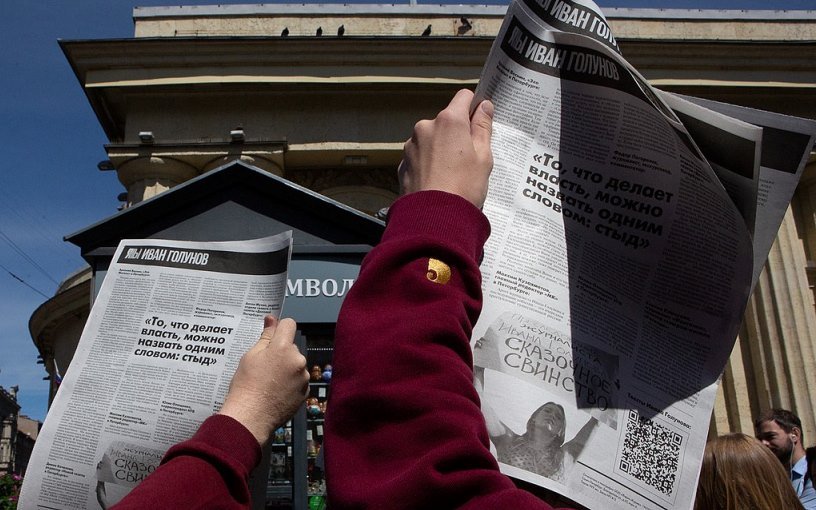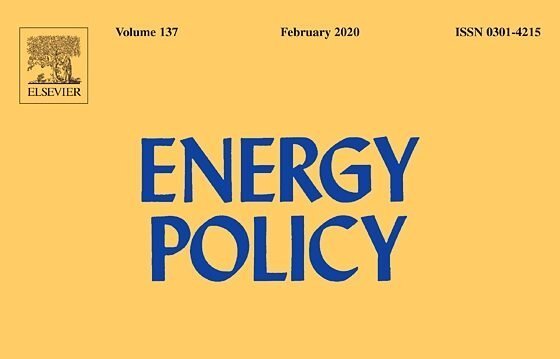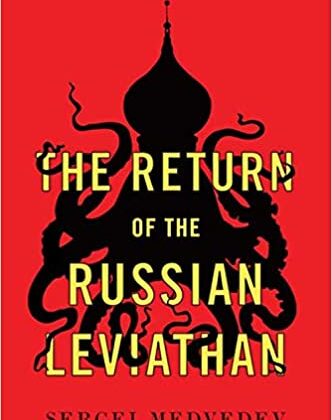(PONARS Eurasia Policy Memo) Among the distinctive features of Vladimir Putin’s 20 years in power, the resurgence of the state stands apart. Considered necessary after the turbulent transition from communism in the 1990s, rebuilding the political order quickly turned into encroachment on fundamental political and civil rights, elimination of independent centers of power, and consolidation of authoritarianism. The coercive apparatus grew at an even faster rate; in addition to the police, prosecutors, and investigators, now it includes the national guards (Rosgvardia) and parastatal organizations like the Cossacks.
Against the backdrop of the Leviathan reinstated, Russians have learned how to counter its constant pressure on their private lives through a combination of contentious and conventional tools. Online and offline campaigns, rallies, public investigations, electoral mobilization, monitoring camps, and alliance building have undeniably become part of citizens’ mobilization toolkit. Sustained collective actions in Shiyes (in Arkhangelsk) since the summer of 2018 and a more recent wave of contention in Yekaterinburg and Moscow last summer show how this learning has supported mobilization and—at least temporarily—countered the autocratic state.
Troubled Times for the State
The summer of 2019 turned out to be politically hot for the third consecutive year in Russia. In 2017, Aleksey Navalny’s presidential campaign coupled with anti-corruption rallies drew tens of thousands of people across the country onto the streets, creating energy and nation-wide mobilization against the incumbent president, Putin. In 2018, in addition to a string of protests regarding waste disposal sites in the Moscow region, the announcement of pension reform triggered a wave of protests involving the parliamentary opposition and extra-systemic actors. Although by September 2018 the hottest contention was snuffed out, the frustration remained: according to Levada-Center, the share of the population thinking that the country is moving in the wrong direction soared from 26 percent in April 2018 to 40 percent in July 2018 and has remained at nearly the same level, reaching a maximum of 45 percent in December 2018. The potential for political protests rose to levels not seen since the 2011-2012 “For Fair Elections!” demonstration campaign, with 28 percent of respondents in February 2019 thinking that public protests with political demands are possible and 20 percent ready to join them.
Three sites of contention emerged in 2019 as a focus of attention: Shiyes (in Arkhangelsk region), Yekaterinburg, and Moscow. The first one germinated from the events of summer-fall 2018, when locals discovered the construction of a waste disposal facility near a small railway station, which was later closed by Russian Railways to prevent activists from going to the site. Apart from rallies in Arkhangelsk, Severodvinsk, and Syktyvkar, and road blockades, petitions to the president, and lawsuits, citizens organized a monitoring camp near the waste facility and managed to sustain it through winter.
In Yekaterinburg, the overnight construction of fences in the downtown main square ignited a series of unauthorized gatherings involving thousands of urbanites. The long-standing project of constructing a church, sponsored by regional tycoons and supported by the governor, was later revealed to include a housing and business development. After numerous altercations, the Russian president intervened and proposed a poll. VCIOM then published the results of its survey, which revealed 74 percent of respondents were against the project. The construction was halted and fences removed. In October 2019, the city administration polled about 100,000 city dwellers on their preferred location for the church.
It was Moscow, however, in the summer of 2019, that became the major battlefield between citizens and the state. First, the arrest of Meduza journalist Ivan Golunov on June 6 sparked unprecedented mass collective action against police abuses of power. Pickets turned into mass rallies. On June 12, about 2,000 people participated in an unauthorized march and more than 500 were detained. Although Golunov was released on the same day, the public campaign against police abuse continued. On June 23, the Libertarian Party—an unregistered political party most famous for organizing well-attended rallies for “Internet freedom” in March 2019—held a meeting that had almost 4,000 participants. Meanwhile, Meduza opened the media project “Golunov. Resistance to Police Abuse.”
Parallel to the “Golunov affair,” elections to the Moscow City parliament scheduled for September turned into a new basis for mobilization when independent candidates were denied registration. Among others, these included Moscow Municipal Deputy Ilya Yashin, head of the Moscow branch of the Yabloko Party Sergei Mitrokhin, Anti-Corruption Foundation (FBK) Director Ivan Zhdanov, and lawyer Lyubov Sobol’. After the independent candidates held a meeting with their constituencies in front of the Moscow Electoral Commission on July 14, events started to unfold rapidly. About 20,000 attended a rally on July 20 followed by a string of unauthorized protests on July 27 and August 3, which sparked harsh reactions from the authorities. Five candidates were arrested alongside Navalny, thousands were detained during the gatherings, and several participants were charged with the “organization of unlawful public meetings” akin to the Bolotnaya cases of 2012. Despite the unprecedented use of force and preventive coercion, on August 10, even more participants, about 50,000, went out to Sakharova Avenue—this time backed by celebrities like YouTube star Yury Dud’ and rap musician Oxxymiron.
Ultimately, the protests in Moscow reached the level of the 2011-2012 mobilization and turned an ordinary electoral campaign into a full-fledged political crisis.
Common Traits of Mobilization
In all instances of the current wave of protests, several common traits are visible. First, the mobilization rapidly achieved large numbers and was sustained over time despite the increasing use of force by the state against the protesters. In Shiyes, activists were harassed and assaulted by private security forces. Police searched their camp and prevented activists from getting to the site, and they arrested and opened administrative and criminal cases against citizens. In Yekaterinburg and Moscow, the people’s response was similar in essence and magnified by the scale of collective action. In the rally on July 27 in Moscow alone, police detained 1,373 and beat 77 participants, according to the watchdog organization ODD-Info. However, the excessive (and barely legal) use of force has not discouraged citizens from going to the streets.
Second, all these protests were weakly coordinated through a combination of social networks, independent media, and established organizations like Navalny’s FBK, his regional network of supporters, and the Libertarian Party. Typical for classical social movements, the campaigns were mostly leaderless. One of the organizers of the “eco-watch” in Shiyes put it in bluntly: “The protest is faceless—there is no specific human or group who controls the protest, it is a people’s protest.” When Yekaterinburg’s Mayor Alexander Vysokinsky tried to appeal to the alleged “leaders of the protests” against the construction of the church, he was rebuked when those named said that they had nothing to do with the “public protest leadership.” In Moscow, rallies continued without major political figures like Navalny, Yashin, or Dmitry Gudkov. To some degree, political leadership was substituted by moral leadership. In Yekaterinburg and Moscow, celebrities encouraged their fans to act and protest. Likewise, in all cases, journalists, civic activists, and their organizations buttressed collective action. Nevertheless, no identifiable coordinating center appeared in the course of mobilization.
Third, despite the seemingly sporadic nature of contention, in each case, preceding developments laid a solid foundation. Prior to the events in Shiyes, a string of protests erupted across Moscow and the surrounding area against the poor management of the waste sites. Even before that, in the Voronezh region, local citizens defended the Khoper Nature Reserve against the construction of an ore extraction facility using a similar repertoire combining large-scale rallies, monitoring camps, petitions, lawsuits, roundtables, and other means. In Yekaterinburg, the conflict around development in the downtown area has been going on for almost a decade. Numerous plans were presented involving the City Pond or the central Labor Square, but locals opposed them. Some early rallies drew thousands of participants. Later on, creative tactics like encirclement of the pond helped to raise public awareness of the problem and create solidarity.
Moscow pre-electoral mobilization also was related to past experiences. Independent candidates expected troubles during the registration stage, thus they did everything possible to ensure the quality of their collected signatures and paperwork. Foreseeing the usual response from the authorities, they used organizational templates developed for the 2015 Democratic Coalition and the 2017 Navalny presidential campaigns. Consequently, a large number of volunteers and an even larger number of endorsers were already mobilized prior to the blatant manipulation of the candidates’ registrations. Ultimately, due to the accumulated knowledge about similar situations in the past and across the country, it was much easier for the opposition to connect the grievances with specific tactics and frames.
Finally, the current wave of mobilization explicitly targets the state and its agents. Protesters see the state’s aggressive actions as lacking legal basis. Construction in Shiyes and Yekaterinburg began with violations of established procedures such as holding public hearings, discussions with experts, and the handling of documentation. Golunov’s charges of drug possession were immediately labeled illegal. And while Moscow’s electoral authorities found some substantive irregularities in collected signatures (e.g., deceased people on the list), the manipulations to invalidate signatures created a sense of injustice. In every situation, state agents—governors, mayors, and other public officials—were perceived to have a vested interest in the disqualifications, while their inadequate and hostile reactions (for instance, the Arkhangelsk governor’s statement that protesters are “scum”) only strengthened suspicions.
Moreover, the heavy involvement of the police in each conflict magnified the feeling that instead of maintaining the public order, state institutions and agencies were being used for private purposes. Opposition leaders attempted to reinforce the idea that there were close connections between public officials and powerful business groups. In Yekaterinburg, activists exposed the plans to develop a multifunctional complex next to the church, and in Moscow, the FBK published investigations into Moscow Vice-Mayor Natalia Sergunina, Moscow City Council Vice-Speaker Andrey Metelsky (who lost his seat on the Council in September 2019), and the head of the Moscow Electoral Commission, Valentin Gorbunov.
People Versus the Leviathan
Two implications follow from the preceding analysis. First, mobilization in Shiyes, Yekaterinburg, and Moscow in 2019 shows that Russians are quite capable of organizing public campaigns akin to Western social movements—regardless of the place or specific issue. These three cases are different in many contextual features but they share the WUNC (worthiness, unity, numbers, and commitment) characteristics of the movements once singled out by American political scientist Charles Tilly in his numerous studies of social activism.
Instead of predominantly local, isolated, and depoliticized public protests as in the past, the current wave of contention relies on complex infrastructure, diffuse leadership, activists, celebrity supporters, weak alliances with systemic/political actors, innovative tactics, and open political and legal claims. Now, protesters’ demands reverberate across Russia’s regions and social strata. Even though there were somewhat similar instances of Russian “movement mobilization” in the past, the current situation, at least partially, is a product of accumulated knowledge about the opportunities for and constraints on collective action.
Secondly, in the course of the current mobilization, the multiple frictions in the construction of the state have become visible to citizens. The Leviathan dissolves into clans and private networks; its malfunctioning as the protector of the public realm becomes unveiled. The notion that the Russian state is corrupt, which has been nurtured by the opposition for years, now has a much broader and welcoming reception, and there is a stronger urge among citizens to cooperate to defend their basic rights, which overcomes the fear of being beaten, detained, arrested, and fined. Although the concessions made by the state in some cases are not as far reaching as they could have been—and should be considered tactical retreats—they shatter the image of the state’s impenetrable stubbornness. For the Kremlin, it also signals some need to recalibrate its strategy between maintaining control over the elites and upholding its contract with the citizenry. Although far from taming the Leviathan completely, the active part of Russian society has learned how to deal with it, resolutely and peacefully.
Andrei Semenov is Assistant Professor in the Department of Political Science at Perm State University and Associate Research Scholar at the MacMillan Center for International and Area Studies at Yale University.
[PDF]











